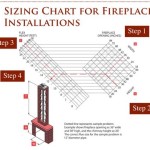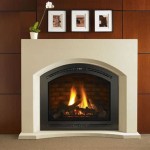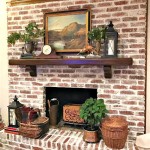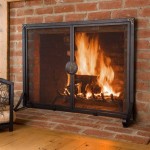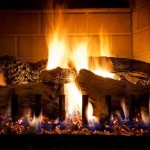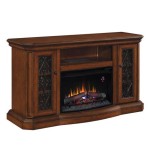How To Babyproof A Brick Fireplace
A brick fireplace, while often a charming and aesthetically pleasing architectural feature in a home, presents a significant safety hazard to crawling infants and toddlers. The hard, sharp edges and corners of the brick, the potentially scalding surfaces when the fireplace is in use, and the presence of fireplace tools all contribute to the potential for serious injury. Parents and caregivers must take diligent steps to babyproof a brick fireplace to mitigate these risks and ensure a safe environment for young children.
Babyproofing a brick fireplace involves addressing several key areas of concern, starting with cushioning or covering the hard edges and corners, restricting access to the fireplace opening, and securing any potentially dangerous tools or accessories. The approach used will depend on the age and mobility of the child, the physical layout of the room, and the frequency of fireplace use.
Cushioning Hard Edges and Corners
The primary danger posed by a brick fireplace lies in its hard, unforgiving surfaces. Infants and toddlers are prone to falls and bumps as they learn to crawl and walk, and a collision with a brick corner can result in significant head trauma, cuts, and bruises. Therefore, the first and often most crucial step in babyproofing a brick fireplace is to cushion or cover these sharp edges and corners.
Various products are available specifically designed for this purpose. Corner guards, typically made from soft, impact-absorbing materials like foam or rubber, can be easily attached to the corners of the fireplace using adhesive strips. Edge guards, similarly constructed from soft materials, can be applied along the entire length of the fireplace's raised hearth. These guards create a protective barrier, minimizing the risk of injury from accidental bumps and falls.
When selecting corner and edge guards, it is essential to prioritize safety and durability. The chosen materials should be non-toxic and free from harmful chemicals, especially if the child is prone to putting objects in their mouth. The adhesive used to attach the guards should be strong enough to withstand pulling and tugging by a curious child, but also removable without damaging the brick surface. Regularly inspect the guards to ensure they remain securely attached and replace them as needed.
Beyond commercially available products, some parents opt for DIY solutions. Foam pipe insulation, cut to the appropriate length and shape, can be used to create custom edge guards. Similarly, pool noodles can be cut and secured to the fireplace using strong tape or adhesive. While these DIY options can be cost-effective, they require careful planning and execution to ensure they provide adequate protection and remain securely in place.
Regardless of the method chosen, properly installed edge and corner guards significantly reduce the risk of injury from accidental contact with the fireplace's hard surfaces. This is a foundational step in creating a safe environment for young children.
Restricting Access to the Fireplace Opening
The fireplace opening itself presents another potential hazard. Children may attempt to crawl inside, exposing themselves to soot, ash, and potentially sharp or unstable objects. Even if the fireplace is not in use, the interior can be dirty and contain remnants of previous fires. Furthermore, a child could become trapped inside the fireplace opening, leading to distress and potential injury.
One effective way to restrict access to the fireplace opening is to install a fireplace screen. A sturdy, free-standing screen can provide a physical barrier, preventing children from getting too close. The screen should be tall enough and wide enough to adequately cover the opening and should be made from a durable material that cannot be easily knocked over or climbed. Mesh screens are generally preferred as they prevent small objects from being thrown into the fireplace.
For homes with a more modern aesthetic, consider a fireplace insert. These inserts are typically made of metal or glass and are designed to fit snugly within the fireplace opening. They provide a complete barrier, preventing access to the interior while also enhancing the fireplace's appearance. Inserts can be particularly useful if the fireplace is not frequently used and the primary concern is preventing access.
Another option is to use a play yard or baby gate to create a safety zone around the fireplace. This is particularly effective for larger rooms where it is difficult to completely block off the fireplace. The play yard or gate should be sturdy and tall enough to prevent the child from climbing over it. Ensure that the gate is securely locked and that there are no gaps or spaces through which the child could squeeze.
Regardless of the method chosen, it is crucial to regularly inspect the barrier to ensure it remains securely in place and that there are no signs of damage or wear. A compromised barrier is no longer effective and could create a false sense of security. Proper maintenance and regular inspection are essential for maintaining a safe environment.
Securing Fireplace Tools and Accessories
Fireplace tools, such as pokers, tongs, and shovels, pose a significant safety risk to young children. These tools are often made of metal and can have sharp points or edges. Children may be tempted to play with them, potentially causing injury to themselves or others. Furthermore, fireplace accessories, such as decorative logs or flammable materials, should be stored safely out of reach of children.
The most straightforward way to address this hazard is to store fireplace tools and accessories in a secure location that is inaccessible to children. This could be a locked cabinet, a high shelf, or a storage container with a child-resistant latch. When the fireplace is in use, tools should be placed on a stand that is stable and difficult to tip over. A heavy, wrought-iron stand is generally preferable to a lightweight, flimsy stand.
If storing the tools out of sight is not feasible, consider using tool guards or covers. These are typically made of soft, flexible materials and are designed to cover the sharp points and edges of the tools. They can help to prevent accidental injuries if a child comes into contact with the tools. However, it is important to note that tool guards are not a substitute for proper storage and supervision.
Particular attention should be paid to flammable materials, such as firewood, kindling, and lighter fluid. These materials should be stored in a safe location, away from the fireplace and out of reach of children. Lighter fluid should be locked away to prevent accidental ingestion or misuse. Firewood should be stacked securely to prevent it from toppling over and injuring a child. Consider using a firewood rack that is designed to be stable and difficult to tip over.
Educate older children about the dangers of playing with fireplace tools and accessories. Emphasize the importance of keeping a safe distance from the fireplace, especially when it is in use. Reinforce these lessons regularly and supervise children closely when they are near the fireplace. Consistent education and supervision are essential for promoting a safe environment for all members of the family.
Beyond the specific aspects of the fireplace, it is important to consider the overall safety of the surrounding area. Ensure that the floor around the fireplace is clear of tripping hazards, such as rugs or toys. Provide adequate lighting to improve visibility and reduce the risk of accidents. Regularly inspect the area for potential hazards and address them promptly.
Babyproofing a brick fireplace requires a multi-faceted approach that addresses the specific dangers posed by the fireplace's hard surfaces, open access, and potentially hazardous tools and accessories. By implementing the strategies outlined here, parents and caregivers can significantly reduce the risk of injury and create a safer environment for young children. Remember that constant vigilance and proactive safety measures are essential for protecting children from harm.

Diy Baby Proofing Your Brick Fireplace Thisaveragemom

21 Paing S That Will Save Your Sanity And Bank Account Baby Proof Fireplace Diy Stuff

3 Ways To Baby Proof A Fireplace Wikihow

Baby Proofing 101 How To Proof Your Fireplace

Finally Had The Epiphany Of How Do I Baby Proof This Brick Fireplace Pool Noodles No Hitting His He Proofing Childproof
Baby Proofing Fireplace More Easy Hearth Padding Oh Love

How To Baby Proof A Fireplace Diy Hearth Cushion Simply September

Babysafetyfoam Com Baby Proofing Fireplace Hearth Guard Bumper Pad Safety Cushion Cover Protection

Baby Proofing Fireplace More Easy Hearth Padding Oh Love

3 Ways To Baby Proof A Fireplace Wikihow
Related Posts

